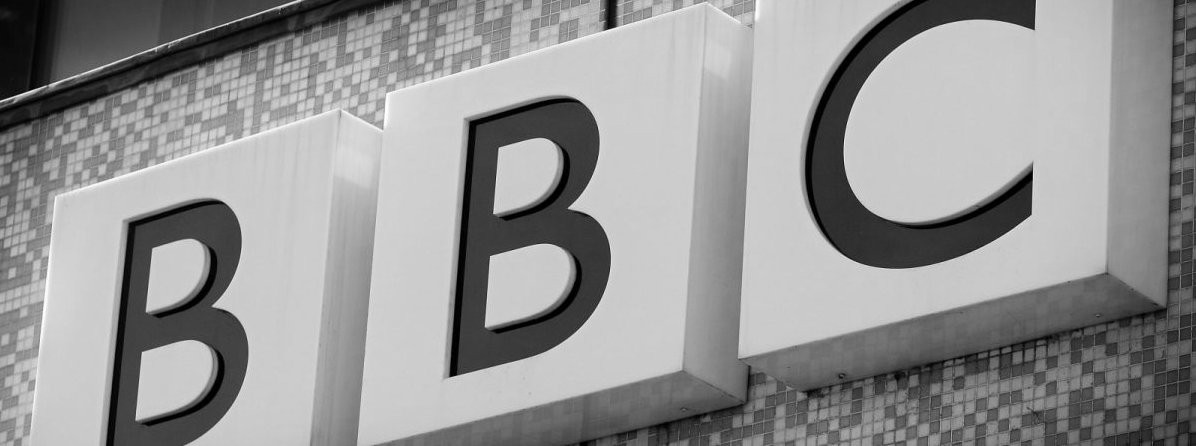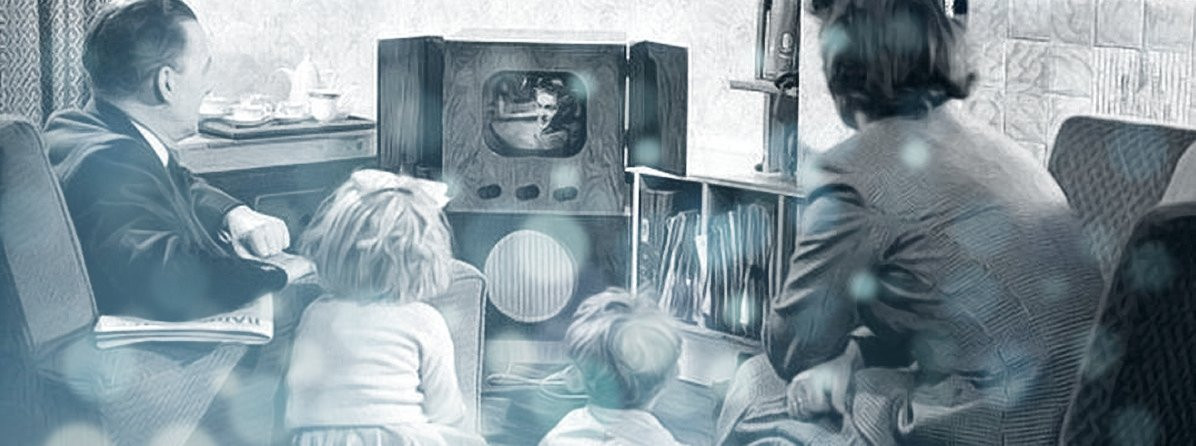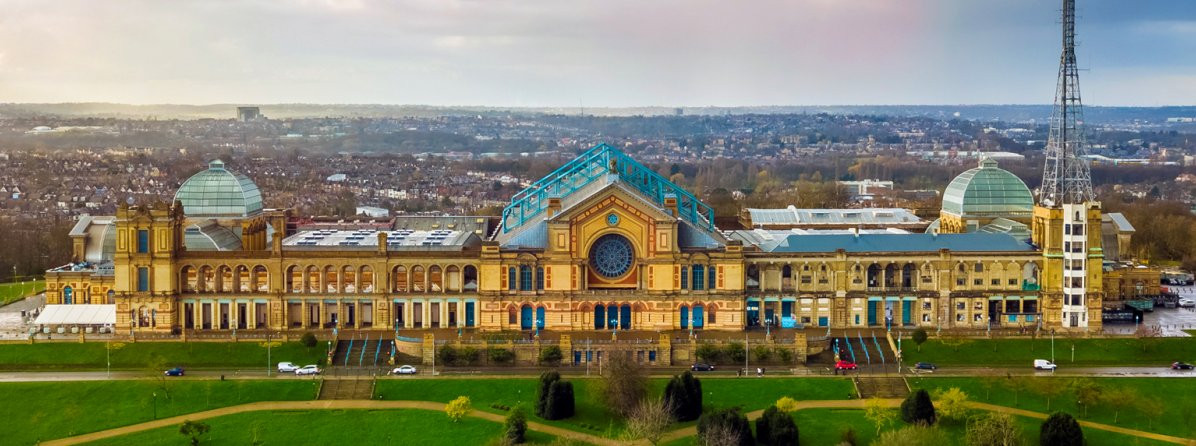
History of the BBC - Part 8
Alexandra Palace's Secret War
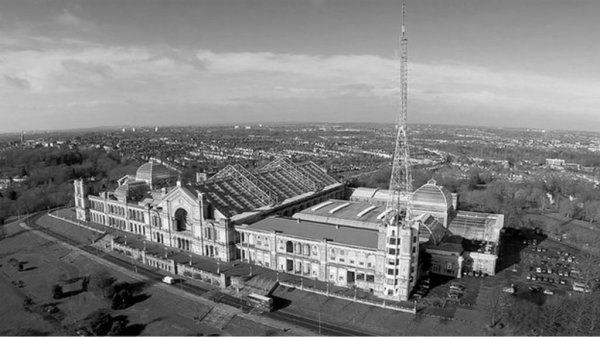
On 1st September 1939 when the BBC ceased television broadcasting it was explained that it was feared that the German air force would use the transmission signals from the aerial of Alexandra Palace as a navigational aid. As a result, television was too dangerous a luxury for wartime. It was a reason that was readily accepted by the British public and also, one would hope, by the enemy. In fact, the aerial was to be used for transmitting signals of an entirely different kind.
During the early stages of WWII, both the RAF and the German Luftwaffe were working furiously to overcome the difficulty of accurate night time navigation over blacked-out enemy territory. However, the German's stole a march on Britain by developing a novel long range radio system based on a previously shorter technique known as the Lorenz blind landing approach, which they already had in use before the war.
Most German bombers were equipped with Lorenz receivers and antennas which were used to assist in night and bad weather landings. The system operated on a radio frequency of around 30 MHz. In order to extend the range over the hundreds of miles needed to carry out accurate bombing raids a huge beam antenna with a high power transmitter was needed. The Lorenz radio receiver onboard the fighters were modified to increase their sensitivity. Developed by the Telefunken Company, the Germans gave it the codename "Knickebein".
The first Knickebein antennas were erected in Germany at Kleve, near the Dutch border and at Stollberg just South of the Danish border. But with the fall of France, beam stations were also set up much closer to Britain on the Cherbourg peninsular.
Thanks to early enigma decrypts from the code breakers at Bletchley Park, British Technical Intelligence had already received clues that a radio based navigation system was being used to guide the Luftwaffe bombing raids over central Britain. The claims of intricate German radar systems were suspected to be true but unproven until a British science advisor to MI6, Reginald Victor Jones, gathered evidence of their existence and set out to actively look for any information that might reveal the progress made by German scientists. Captured Luftwaffe aircrew and analysis of the electrical equipment found in crashed German bombers helped him to put the pieces together.
The breakthrough came when a crashed Heinkel was recovered revealing a Lorenz receiver that had been adapted with a high sensitivity add-on. Jones then convinced the High Command of the menace and special reconnaissance flights were quickly organised to hunt for beams with a Lorenz signature. One was quickly located with, not just one, but two Lorenz type beams intersecting over Derby-home of Rolls Royce Aero Engines. With the existence of the beams confirmed steps were immediately taken to find a way of neutralising them. A small team, under the direction of a young physicist, Dr Robert Cockburn, was put together in order to devise the necessary jamming equipment.
But in the meantime, the Germans were moving ahead themselves with refining their own equipment and developed a system which used 3 director beams. The added advantage of this was that the third beam acted as a semi-automated bomb release giving a signal at precisely the right moment for the aircraft to release its bombs. This meant the German's were able to carry out night time raids with devastating accuracy.
In November 1940, British radio listening stations began to pick up unusual signals from German bombers. As luck would have it, the frequencies used were within those covered by the Alexandra Palace transmitter. Engineers were bought in to reactivate the transmitter and the signal broadcast from the aircraft was picked up at AP which then re-transmitted the signals back to the beam station (on the same frequency) causing an error in the range estimations. The Alexandra Palace transmissions were sent on the bomber's receiving frequency causing the bomber to immediately re-transpond the signal back, which would be picked up by the beam station and again by the ground based receiver, resulting in a further signal being transmitted by AP and so on and so on. The result was a string of unsolicited returns to the beam station in addition to an occasional "wanted signal". This jamming system was code named "Domino" and first became active in February 1941. On the first few nights the AP transmitter was used at low power simply to confuse the Germans - who assumed that their equipment was faulty. Later, the strength of the signal was increased and it howled round like a badly set PA system - rendering the German system useless.
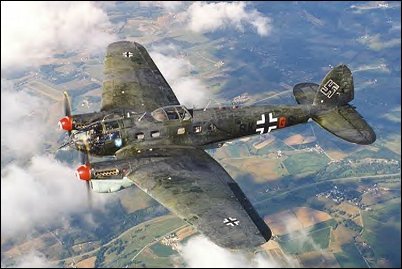
Then on 3rd May 1941, three German aircraft equipped with a somewhat more refined system were shot down. The transmitter units were salvaged and sent to Farnborough for analysis. The details of the beam steering system were discovered. This opened up a second jamming opportunity, as it was found that simply by transmitting a continuous modulating tone on the beam frequency, the automatic analyser on board the aircraft lost synchronisation and gave completely arbitrary steering instructions. Jammers using this technique were quickly produced and by the middle of that month the German bombers discovered that the skies over Britain had become a much more hostile place for them. A short while later, the bombing abruptly stopped. The Battle of Britain was won and Hitler turned his attention towards Russia.
However, the story of Alexandra Palace's hidden War years doesn't quite end there. A few years ago I received an email from Simon Vaughan, the archivist of the Alexandra Palace Television Society. Simon had previously gone to see a former (long retired) BBC engineer called W C (Paff) Pafford. When Simon went to visit him, Paff was in his early 90s. Paff was an engineer at AP in the early days of transmissions and, when Simon visited his home, in his bedroom, next to the wardrobe, was the very first BBC Television Tuning Signal - designed and drawn by Paff and used in the pre-war era. Paff was in the studio on the first day of programmes to RadiOlympia in August 1936.
Simon wrote: "Paff is the only man who can unravel a television mystery from the war years. In my earlier e-mail I mentioned that we hold over 1,200 photographs taken by Desmond Campbell. One packet of the photographs is dated August 1943 and shows a television demonstration in Studio A at Alexandra Palace. The two engineers featured in several of the photographs are identified by their surnames on the packet, so too is the female and child also featured. These also turn out to be the wife and daughter of one of the engineers. Mary Allen the make-up expert is also featured, along with Douglas Birkinshaw, and Desmond Campbell himself! But the key person in all this is Paff Pafford - he is featured at a black-board with Douglas Birkinshaw. When I saw Paff I asked him about this incident during the war. He got extremely upset, started shaking, saying "I can't tell you, I can't tell you - I signed the official secrets act", and had tears in his eyes! Obviously, there was no way I was going to pursue this line with him, changed the subject and soon had him calm again. Just as I was leaving he touched me on the arm and with his other hand tapped the side of his nose and said "many secret things happened during the war"! And that is where the story ends . . . how frustrating!
"There are no records of any television display being undertaken in either the BBC Written Archive Centre or Public Records Office. I asked Neil Campbell, who gave APTS his father's memorabilia. He can remember his father being given the petrol coupons to be able to drive the family car down from Daventry (where he was stationed during the war), to Alexandra Palace for a special meeting - either with the King or Winston Churchill! Neil remembers this clearly as his father had a car accident on his way back to Daventry, so can tie it in to a specific event. But, he can't remember exactly when during the war this incident took place. However, I have the photographs to prove a demonstration took place, even that the studio equipment was fired-up and working as there are photographs taken off the studio and/or gallery monitors."
It would appear that there is still a mystery to unravel...
Part 9: Back from the Big Parade
Laurence Marcus 2004 - with help from Simon Vaughan at APTS
DOMINO versus Y-GERAT - Alexandra Palace, February 1941
Our sequence of operations on the first night of the Luftwaffe's blitz on London was as follows. First we would check on our receiver at Alexandra Palace the carrier frequency being used by the enemy in Normandy on their latest Y-Gert radar system. This we did during the Luftwaffe's warm-up testing period prior to their take-off to bomb London and/or the Home Counties. Little was ever known about precise intentions, but at least we made doubly sure that our transmitter would be tuned to precisely the correct frequency, to ensure that our radar countermeasures were totally effective.
Later on, of course, they tried changing their radar frequencies (wavelengths) to catch us out, but we were ready for all their tricks. It took us nearly ten minutes to retune all our stages of RF circuits in the transmitter, which was not easy to do under pressure of impending attack. The Luftwaffe only needed thirty minutes from take-off before bombing over London.
Our other safeguard was provided by our operators as Swains Lane receiver station at Highgate, a few miles away but connected by Post Office land-line to AP transmitter. By using a low-voltage motor, this line controlled any drifting in our lock-on carrier beam, thus eliminating any give-away heterodyning beat-notes. On red alert, full power was applied at the Transmitter HT Control Desk, where I had every facility for meter-checking and listening on headphones to the young Luftwaffe pilots trying unsuccessfully to contact their HQ in northern France amidst confused instructions.
On the first night, our full-power intervention from the AP transmitter to the pilot's receiver caused enemy radio communication to get out of hand, leading to panic calls first blaming their own Y-Gert for failure, then HQ for false readings and finally each other for meter errors by which time our own AA firing power was at maximum. Even AP's own glass roof joined in the crashing chaos going on above. But the bombs we were expecting never arrived.
There were three of us on duty in the Transmitter Control Room at AP with others on standby, but we were all exhausted with nervous tension. We were never sure what was coming next. It was a night of dramatic failure for Y-Gert and those highly trained young pilots too scared to take bombing initiative or get shot on returning to base.
Chaos ruled supreme, and the following night I again decided to go for full-power, (despite restraining advice which came too late), as there was no time for 'phoning or indecision. And again the results were successful. Rightly or wrongly, it worked, which was all that mattered.
By chance we were right. It was full power that blasted the enemy Y-Gert system to 'kingdom come', which shattered German pilot confidence for good. The next night I reduced power slightly until our meters were stable and happy, whilst our headphones still registered complete chaos overhead. After the 'All Clear' went, that was the first night we slept well.
I had always been scared of seeing another Coventry disaster over London caused by mistakes in checking enemy radar frequencies, which rendered our own countermeasures useless, leaving the Luftwaffe in full control of radio communication for bombing selected targets. We were fortunate at AP, where we used double checking on all enemy frequencies.
I would now like to try to conjure up the state of the art, including the psychological state of my mind when I was sent back from Dorset to Alexandra Palace following the dreadful cock-up at Coventry. "This must never happen again", was the message that kept going round in my mind, knowing full well from our local knowledge when the Heinkel came down on the beach at Bridport, that the next nightly blitz by the Luftwaffe was to be London.
Naturally, imagined that I had been selected as a junior technician to join the team of experts who had already started modifying the television transmitters to destroy the latest enemy radar system, Y-Gert, which had not yet been used. To my horror, when I arrived back at Ally Pally and rang the front door bell, I was greeted by the caretaker, who informed me that all the senior television expert engineers had finished the modifications and had left London. I then met our cleaner, named Myers, who always used to make our tea on night shift, and he told me that Mr T H (Tony) Bridgewater was still there. Naturally I was delighted and after receiving a full report on the present situation, I learned that he was leaving the BBC to join the RAF at Radlett.
When I recovered, I decided to go straight to Broadcasting House to see Mr Hotine, Superintendent Engineer Transmitters (S.E.T.). When I told him there were no operational engineers left at AP, he immediately 'phoned Daventry for volunteers. But there were none and I could hardly blame them as Ally Pally was on Haw-Haw's list and Ministry of Defence were sending RAF operational staff anyway.
I had been warned about 'phoning regarding operations, due to [the risk of] tapping, and there is no doubt that Haw-Haw, who knew Ally Pally backwards, had got wind of this administration cock-up. Because shortly afterwards, when I returned to Ally Pally, I discovered that Bill Jackson, my pre-war assistant, was still living at AP, awaiting a transfer to another job. Fortunately he had been trained on 'frequency changes' on our transmitters, so I was able to pick up all the necessary information. However, I did query with him why TRE had been appointed by the Ministry of Defence to use our obsolete receiving station at Highgate as a control centre using a Post Office land-line; that was in itself a risky operation. Jacko (as I always called him), seemed a bit embarrassed but also seemed to be agreeing with my queries, when suddenly there was a hell of a whistle and a terrific explosion outside, rattling the glass roof and windows. We both ran like hell for the front door and flew into the one and only steel bell shelter. We were both white and shaken.
Later we discovered that there had been a stick of six high-explosive bombs aimed parallel to the front facade in line with both our sound and vision transmitters, about 100 yards short to the south. After leaving, Jacko sent me his report, with which I fully agreed.
So my querying the Ministry of Defence's decision to do radio monitoring of enemy radar frequency-checking from our decrepit receiving station at Swains Lane, Highgate, proved to be valid. In fact an investigation proved that the frequency calibration of the pre-war receiver in use was not up to standards required for checking enemy radar systems. Owing to the complicated line of command between TRE, the RAF 80 Wing Radlett and the BBC, this near catastrophe has remained under the carpet with other. One good thing came out. Six RAF technicians and a few BBC engineers arrived post-haste to man 'Domino' at Ally Pally.
The obvious conclusions from this experience is that TRE's failure to check enemy radar frequencies accurately at Coventry, was repeated at Swains Lane, Highgate, where TRE chose to carry out their monitoring of enemy radar frequency-checking. Unlike Coventry, by sheer luck Alexandra Palace was not flattened out of existence. The final conclusion is that TRE personnel should not have taken on operations duties but should have left these to professional engineers trained in that work. And eventually that was what happened at Alexandra Palace, where we doubled-checked each and every vital operation which finally obliterate the enemy Y-Gert radar system.
W C ("Paff") Pafford
